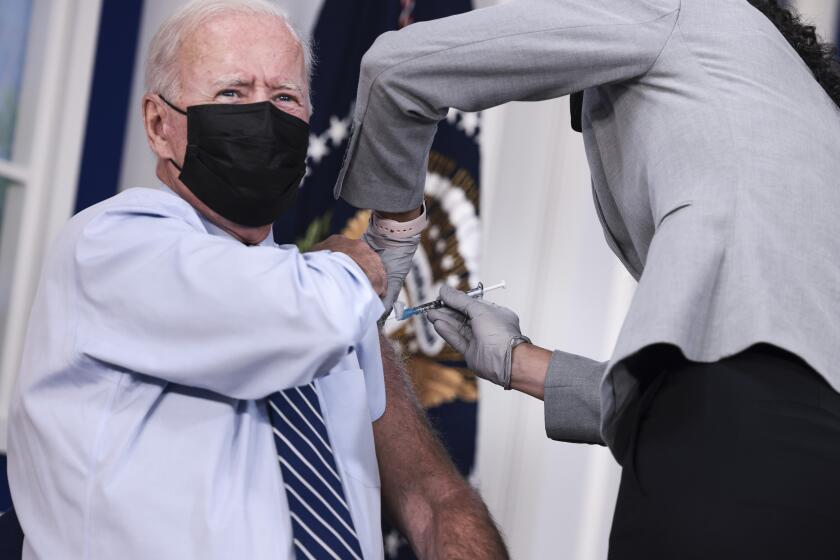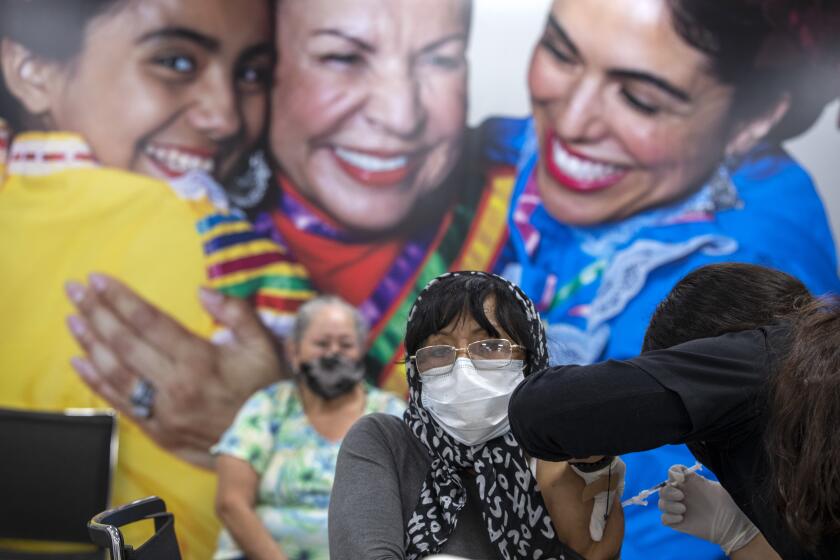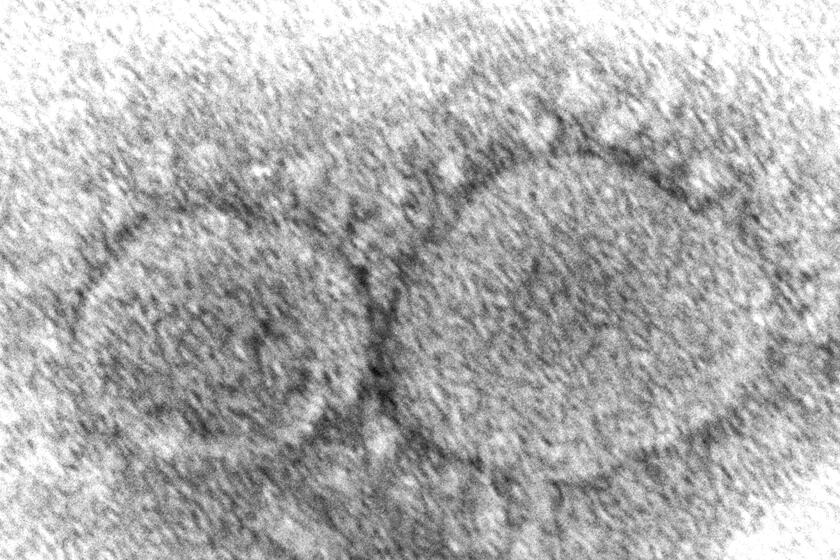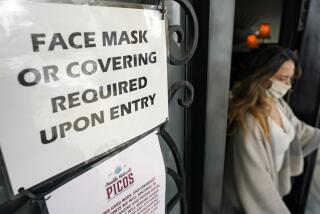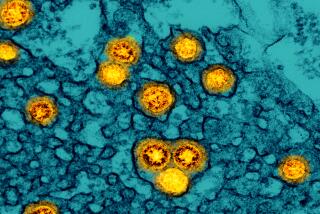U.S. faces a double coronavirus surge as Omicron advances
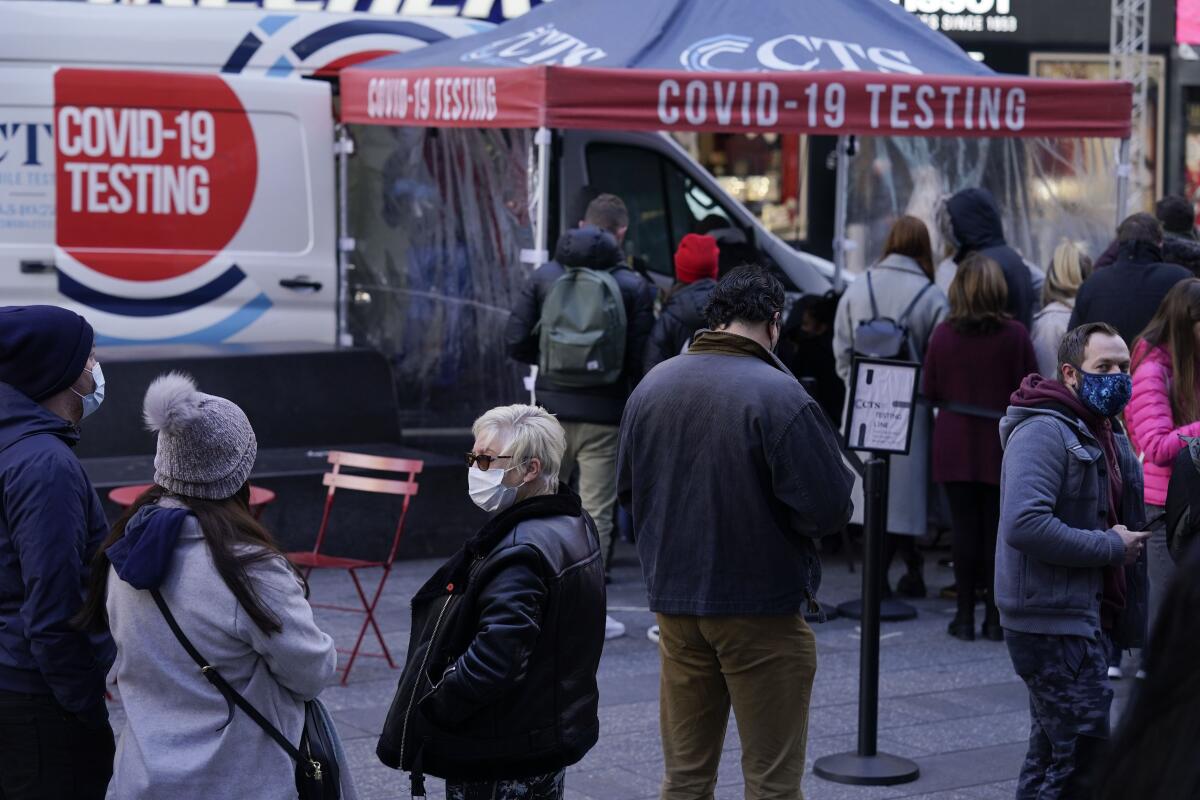
- Share via
The new Omicron variant speeding around the world may bring another wave of coronavirus chaos, threatening to further stretch hospital workers already struggling with a surge of Delta cases and upend holiday plans for the second year in a row.
The White House on Wednesday insisted there is no need for a lockdown because vaccines are widely available and appear to offer protection against the worst consequences of the virus. But even if Omicron proves milder on the whole than Delta, it may disarm some life-saving tools and put immune-compromised and elderly people at particular risk as it begins a rapid assault on the United States.
“Our Delta surge is ongoing and, in fact, accelerating. And on top of that, we’re going to add an Omicron surge,” said Dr. Jacob Lemieux, who monitors variants for a research collaboration led by Harvard Medical School.
“That’s alarming because our hospitals are already filling up. Staff are fatigued,” leaving limited capacity for a potential crush of COVID-19 cases “from an Omicron wave superimposed on a Delta surge.”
Most likely, he and other experts said, an Omicron surge is already underway in the United States, with the variant outpacing the nation’s ability to track it.
Based on specimens collected last week, the Centers for Disease Control and Prevention said Omicron accounted for about 3% of genetically sequenced coronavirus specimens around the country. Percentages vary by region, with the highest — 13% — in the New York-New Jersey area.
But Harvard experts said these are probably underestimates because Omicron is moving so fast that surveillance attempts can’t keep up.
As the CDC warns a winter COVID-19 surge is on its way, the White House urges vaccinations and booster shots to protect against the Omicron variant.
Globally, more than 75 countries have reported confirmed cases of Omicron infections. In the United States, 36 states have detected the variant.
Meanwhile, Delta is surging in many places, with hot spots in New England and the upper Midwest. The five states with the highest two-week rolling average of cases per 100,000 people are New Hampshire, Rhode Island, Michigan, Minnesota and Vermont.
Universities are abruptly closing classrooms during finals week with infections multiplying at a fast rate. The NBA is postponing games and the NFL had its worst two-day outbreak since the start of the pandemic, with dozens of players infected.
Outside the U.S., the president of the European Union said Omicron will become the dominant variant in a month and declared that “once again, this Christmas will be overshadowed by the pandemic.”
Scientists around the world are racing to understand Omicron, which has a large number of worrisome mutations that could affect how well it spreads from person to person. How quickly the number of cases doubles, known as “doubling time,” can give a preview of what the disease burden could be in a few weeks.
CDC Director Dr. Rochelle Walensky said Wednesday that early data suggest Omicron is more transmissible than Delta, with a doubling time of about two days.
Delta, so far, has been able to elbow out all other variants that otherwise might have spread more widely. Will that be the case with Omicron too?
In Britain, where Omicron cases are doubling every two to three days, the variant is expected to soon replace Delta as the dominant strain in the country.
“The data out of the U.K. are quite alarming at this point,” and foreshadow what’s to come in the United States, said Bronwyn MacInnis, director of pathogen genomic surveillance at the Broad Institute of MIT and Harvard. For example, she said, by Tuesday afternoon, Omicron was already the most common variant in London.
In many ways, Omicron remains an enigma. Hints are emerging from South Africa, where it was first reported, indicating it may cause less severe disease than Delta but be better at evading vaccines.
But, MacInnis warned, “There’s much more that we don’t know about this variant than we do, including the severity.”
At the same time, Lemieux said, there seem to be fewer tools to fight it. Some monoclonal antibody treatments don’t work as well against Omicron in lab tests, Lemieux said. Vaccines appear to offer less protection, although CDC officials said booster shots strengthen that protection.
Dr. Anthony Fauci, the nation’s top infectious disease expert, said Wednesday that there is no need, for now, for an Omicron-specific booster shot. The two-dose mRNA vaccines, from Pfizer-BioNTech and Moderna, still appear to offer considerable protection against hospitalization from Omicron, Fauci said.
“If we didn’t have these tools, I would be telling you to really, really be worried,” Fauci said.
Vaccine makers are racing to update their COVID-19 shots to be a better match against the Omicron variant, just in case.
Jeff Zients, the White House coronavirus response coordinator, said the U.S. has the tools to fight the virus, including Omicron, and “there is no need to lock down.” With vaccines available now for 95% of Americans, “we know how to keep our kids in schools and our businesses open. And we’re not going to shut down.”
Health officials called on Americans to get vaccinated, get their booster shots, wear masks indoors and get tested before traveling and before holiday gatherings.
“Hospital capacity is already at a breaking point in many states because of severe cases of COVID-19,” Michael Fraser, chief executive of the Assn. of State and Territorial Health Officials, said in a statement.
Given the high level of transmission, MacInnis said there will undoubtedly be severe cases.
“No matter how severely it affects healthy, fully vaccinated and boosted populations, it will hit the most vulnerable among us the hardest still,” she said. “So the elderly, the immunocompromised, other vulnerable populations will still be at greatest risk and still bear the brunt of this.”
